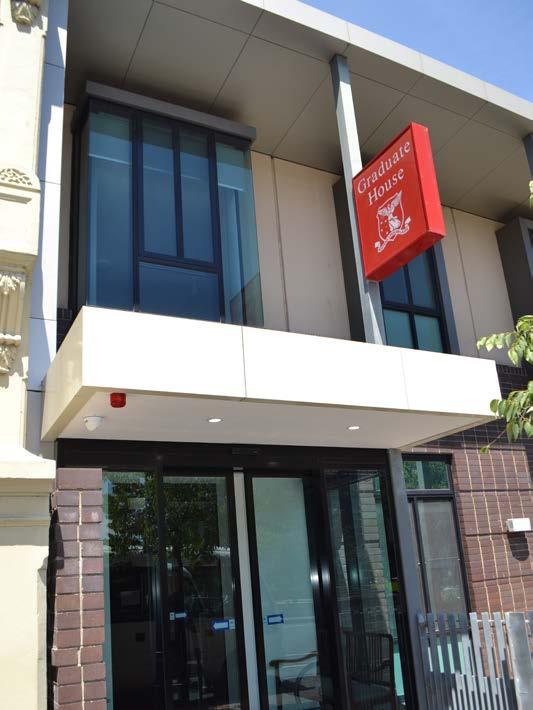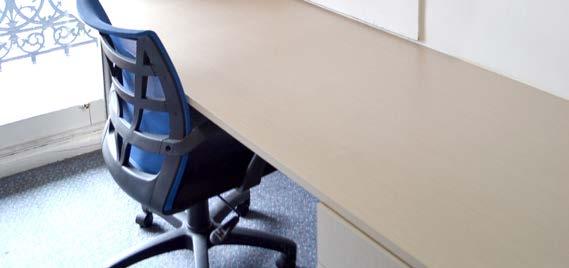
25 minute read
REVIEW February Monthly Luncheon
February Monthly Luncheon
by The Hon Diana Bryant AO QC
Advertisement
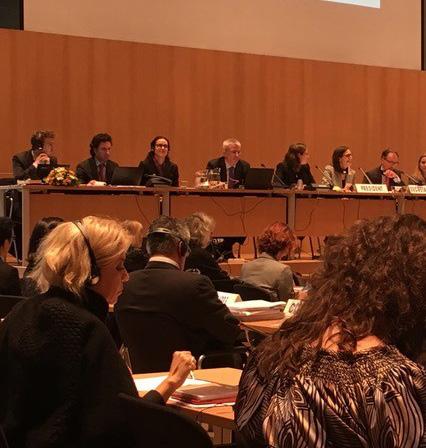
The Seventh Special Commission in 2017, held in the annex to the Peace Palace in The Hague.
The Hague Child Abduction Convention turns 40 Success or failure?
On 25th October 2020, the 40th anniversary of the countries by the Family Court, and forget that this Abduction Convention – the full name of which instrument, as its name indicates, is an international is The Hague Convention on Civil Aspects of forum convention; that is where should a case be International Child Abduction – came and went. heard when there is an international dispute between Many international events were planned, but due to parties in different countries – and particularly the pandemic, in the end there was simply a one- when one party has removed a child to another hour webinar introduced by the Secretary-General country without the consent of the other parent. of the Hague Conference on Private International Probably the most high-profile case in Australia was Law. It warranted more. what the press called the ‘Italian children’s case’. It There is no doubt the Abduction Convention is important, but many people don’t know how it operates and why it was necessary. was unfortunately mischaracterised by the press as a custody case, and support from the media for the mother undoubtedly led to a poor outcome for her. The media for a start generally fail to understand what the Convention does. We tend to see and hear stories about children being forced to return to other The aim of the Convention is to prevent a parent from taking a child to another jurisdiction, one where the parent may have a connection, without the consent
of the other parent who has ‘rights of custody’, and then persuading the court in that country to keep the child there and litigate the case in those courts (if at all). Prior to the Abduction Convention, there were many difficulties for a ‘left-behind parent’ including: • locating the child; • being able to enter the other country; • having the resources to litigate; and • overcoming jurisdictional bias. Although private international law principles supported cases being heard in the country of domicile or habitual residence, the ‘best interests’ principle applicable to custody cases overrode those principles. Many will remember the Jacqueline Gillespie case involving the Malaysian Prince to whom she had been married. The case was notorious for the Prince successfully abducting the children from Australia to Malaysia. What is not so well known is the litigation which preceded his actions when the mother removed the children from Malaysia without consent. The Abduction Convention had not yet been ratified by Australia and the trial judge did not order the return of the children to Malaysia. During the 1970s, States Parties, through the Hague Conference on Private International Law (HCCH) an organisation established in the late 19th century, based in the Hague, worked to try to remedy this situation. They set about drafting a convention that would allow for children who had been wrongfully removed (in breach of rights of custody of the other parent) to be returned to their country of habitual residence for the custody case to be heard in that place. It was envisaged that if the taking parent had a strong case to be allowed to re-locate to another country then the Court of the country of habitual residence would consider that as part of the custody proceedings – and did in many cases. The idea was an automatic and speedy return if wrongful removal was established if the child was habitually resident in the country of origin. Importantly, to overcome the logistical problems facing left-behind parents, a novel arrangement was proposed. This was the establishment of Central Authorities in each country who would, upon receiving an application from a Central Authority in another country, locate the child and taking parent, serve them with documents and arrange for the matter to come before a court with jurisdiction. This obviously made it much easier for the leftbehind parent, and as time passed, created a cohort of Central Authorities with considerable experience and expertise and with links with other Central Authorities. There were to be only a limited number of exceptions to return: • where the proceedings were commenced more than a year after the wrongful removal, and it is demonstrated that the child is settled in their new environment; • where the child objects to being returned (to the country, not the parent) and is of an age and maturity where it is appropriate to take into account the child’s views; and • where there is a grave risk that his or her return would expose the child to physical or psychological harm or otherwise place the child in an intolerable situation. Treaties and Conventions are always the result of compromises and perhaps not unsurprisingly, when the First Commission of the XIV Session of the Hague Conference on Private International Law met on 6th October 1980, then, as now, attention centered on the exceptions to automatic return. Following some days of lobbying and debate, the Convention in its current form was adopted on 25th October 1980 and immediately signed by four States (Canada, France, Greece and Switzerland). Whilst there is no need for judicial involvement if a party agrees to return to the country of habitual residence once they are served with an application under the Convention, any dispute about the application of the Convention or reliance on one or more of the exceptions, must be adjudicated by a court. No international adjudicative body was established or empowered to regulate the case law, and thus, guaranteeing a uniform interpretation across all states becomes problematic. Furthermore, states with a civil law tradition, do not place as much store on decisions from other jurisdictions which
in countries with a common law tradition might be regarded as helpful precedents. However, this has led to the establishment of other drivers of the application of the Convention, some of them very novel indeed. They include, Special Commissions, Judicial Networking and Direct Judicial Communications, INCADAT (a record of all determined cases), INCASTAT (statistical analysis of return orders), Guides to Good Practice, The Judges’ Newsletter on International Child Protection, Cross-Border Mediation and the Malta Process. Early difficulties with implementation were dealt with by the Hague Conference convening Special Commissions at regular intervals to review the operation of the Convention. This had the advantage of bringing together initially members of the different Central Authorities, later enlarged to include judges. The first Special Commission took place from 23rd-26th October 1989. Several questions as to the operation of the Convention were addressed. It was noted that ‘rights of custody’ in the Convention were not “necessarily coterminous with rights referred to as ‘custody rights’ created by the law of any particular country or jurisdiction thereof”. It was noted that “the award of what is called ‘custody’ to only one parent under domestic law, does not necessarily mean that all ‘rights of custody’ within the intent of the Hague Convention have been granted to that parent”. For example, a parent who had the right to give or refuse consent to removal was considered to have ‘rights of custody’. This was finally made clear in the United States in 2010 when the Supreme Court held (Abbott v Abbott NO 08-645 (2010)) that ‘ne exeat’ rights alone (that is, the prohibition on a parent from removing a child from a country) constituted ‘rights of custody’ within the intent of the Convention. As will become apparent, there are other factors that have led to ‘rights of custody’ attaching to a very wide group, perhaps much wider than the drafters originally envisaged, and has dimmed to a considerable degree, the illumination of what is a ‘right of custody’ and what is a ‘right of access’. These days most parents would be regarded as having ‘rights of custody”. The usefulness of Special Commissions as a means of addressing problems and issues regarding the operation of the Convention ensured their continuation, and the Seventh Meeting of the Special Commission on the Practical Operation of the Hague Child Abduction Convention and the 1990 Hague Child Protection Convention held in October 2017, included 292 participants, representing 62 Member States and one REIO, six non-Member Contracting States, four invited non-Member non-Contracting States and observers from 14 IGO/NGOs. After several years, and with the increasing number of States ratifying and adopting the Convention, it started to become apparent that the successful operation of the Convention depended not only on the expertise and commitment of the Central Authorities, but also on an experienced and committed judiciary. Post-mortems on failed applications often showed that there had been a judge who was not sufficiently familiar with the aims of the Convention and the need to avoid a full welfare investigation, or, in some cases, parochialism, often due to an unfamiliarity and uncertainty about the judicial process and the judges in the jurisdiction to which the child would be returned. Identifying this, Professor William Duncan, then a member of the staff of the Permanent Bureau, convened a conference in the Netherlands, known as the De Ruwenberg Conference from 22nd-25th June 1998, attended by judges from about half the jurisdictions then operating the Convention. Its impact cannot be understated. The notion that judges from different jurisdictions and legal traditions could meet informally to discuss issues and initiatives arising from the need to interpret a common Convention, and particularly one which was concerned with the lives of children, was novel. It proved to be revelatory. From it came the International Hague Network of Judges (IHNJ), regular Anglophone/Francophone and Anglophone/Germanophone conferences, the rise and importance of international family law conferences, the preparation and publication of a Judges’ Newsletter for International Child Protection, and INCADAT. Perhaps most importantly, William Duncan encouraged States Parties to include judges in their delegations to Special Commissions. This enabled an input from those who were making decisions
about Convention law and practice. It also enabled me, as one of the designated International Network of Hague Judges for Australia, to attend three Special Commissions and later to chair a Working Group. The IHNJ however proved to be one of the most important initiatives of the Permanent Bureau. States Parties are invited to nominate one or two judges with responsibility for acting as a liaison point for inquiries from Network judges in other jurisdictions, and as a conduit to the judges within the jurisdiction. Global and regional meetings of the IHNJ have been a regular feature of the calendar of the Permanent Bureau and its development will be further discussed. At the Third Special Commission held in March 1997, the question was raised about the possibility of specially designated courts to hear Convention cases to ensure that judges involved had sufficient knowledge of the Convention’s provisions and to enable expedition of proceedings. This did not eventuate but by the Seventh Special Commission courts were being positively encouraged to “concentrate” jurisdiction in specialist Hague judges. Many jurisdictions have done so. The Special Commission of September/October 2002 had a particular focus including: • to consider and approve a Guide to Good Practice in relation to the operation and application of the Convention; and • to consider a report on direct international judicial communications in the context of the
Convention. The Guide to Good Practice was to be “a practical ‘how to’ guide to help implement the Convention, concentrating on operational issues and targeting particularly new contracting States”. The effectiveness of this Guide led to the preparation of a number of Guides to Good Practice in various areas. The latest Guide is a Guide to Good Practice on Article 13(1)(b) – the ‘grave risk of harm’ exception. This has proved to be an interesting, and once again novel way of dealing with cross-cultural/ jurisdictional issues affecting the application and implementation of the Convention. It was developed as a means of enabling different jurisdictions to adopt common practices, to the extent permissible in that jurisdiction, without offending national laws or judicial processes by trying to impose strict rules which likely would not find universal endorsement. For the Special Commission of September/ October 2001, Philippe Lortie, First Secretary, reported on practical mechanisms for facilitating direct international judicial communications in the context of the Convention. The report arose from recommendations from the Fourth Special Commission that “Contracting States are encouraged to consider identifying a judge or judges or other persons or authorities able to facilitate at the international level communications between judges or between a judge and another authority”. Accepted safeguards were identified: • communications to be limited to logistical issues and the exchange of information; • parties to be notified in advance of the nature of proposed communication; • records to be kept of any agreement reached in writing; and • parties or their representatives to be present in certain cases, for example via conference call facilities. The drawing up of Principles began following the Fifth meeting of the Special Commission in October/November 2006 with a group of experts drawn primarily from the judiciary to develop a preliminary draft. Following further consultations, and the endorsement of the Special Commission held in June 2011, the Emerging Guidance and General Principles for Judicial Communications was published. The concept of direct judicial communications, a relatively novel one given especially the different States and systems of law encompassed, has gained currency and added to the efficacy of the Convention. Its success is best summed up by Sir Mathew Thorpe, formerly Head of International Justice for England and Wales, writing in the Judges’ Newsletter with a special focus on the 20th anniversary of the International Hague Network of Judges. “Let me step back from any further consideration of the detail and simply observe that over the last two
decades there has been a movement of forces all in the same general direction. “…This is a history of harmony since, apart from the earliest days, there has been no real dissent and there is not a single case in which miscarriage of justice has resulted from an abuse of the general principles governing direct judicial communication. “So, we have seen the specialist family judges of the world united in their more or less passionate support for direct judicial collaboration. This support is expressed not only by the trial judges, but also by the most influential courts, such as the Court of Justice of the European Union and the Supreme Court of the United Kingdom. We should also note the flexibility of the tool. Although originally and principally for use in child abduction cases it has in this jurisdiction been used in cases involving inter country adoption, maintenance, simultaneous care proceedings in two jurisdictions, the validity of marriage and a divorce forum dispute. There would be no sense or logic in restricting its use. It is a tool of general utility.” The Judges’ Newsletter, a biannual publication, was first published in the spring of 1999 in order to ensure circulation of information relating to judicial co-operation in the field of international protection of children. It covers all the Children’s Conventions and reports on the numerous initiatives taken throughout the world in the framework of the Conventions. An examination of the contents of the recent publications will indicate the extent to which this Newsletter informs Network judges about cases, developments, research and meetings and conferences. The last two were editions with a special focus: ‘The Child’s Voice – 15 years later’, and ‘The 20th Anniversary of the International Network of Judges’. This has proved to be an informative and inclusive project, indicative of the value placed by the Permanent Bureau on fostering and nurturing the IHNJ as an important part of the continuing efficacy of the Convention. The Fifth Special Commission meeting noted that effort was put into securing voluntary solutions through a variety of methods, including mediation, and welcomed mediation initiatives and projects. It noted the Permanent Bureau was continuing its work on a more general feasibility study on cross-border mediation. This ultimately led to the development of a Guide to Good Practice on Cross Border Mediation. The Guide addresses the fact that conflict dynamics are particularly pronounced in cross-border and access disputes. An added aspect of mediation in applications under the Convention is the fact that although an outcome that will provide a lasting solution is the holy grail, even in those cases where mediation does not lead to a final resolution, there are advantages in the parties taking a greater account of the interests of their children, and potentially making the outcome of the proceedings, whatever they are, better for the children. Experience has demonstrated that because of the nature of the Convention proceedings, it is important that mediators have special training in particular to understand both the substantive and the procedural levels of the mediation process. The special challenges in cross-border disputes have led to the development of bi-national co-mediation and there is a continuing need for a joint concept for the further training of mediators and for setting up an international family mediator’s network. Mediation has now become an important feature in many Convention proceedings.
Relationship of the Convention with other International Instruments
Whilst the Convention specifies that it will have priority in matters within its scope, at the same time, Article 34 also states that the Convention shall not otherwise restrict the application of another applicable international instrument in force between the relevant States for the purposes of obtaining a return or of organising access rights. Thus, there must be compatibility of the Convention with other instruments, but priority must be given to those provisions (in the Convention) that bring about a speedy, and to some extent, temporary solution. But other instruments can be used if they achieve this goal. Since 1980, a number of such instruments have come into existence. They include the Council of Europe Convention, the Hague Convention of 19th October 1996 on Jurisdiction, Applicable Law, Recognition, Enforcement and Co-operation in Respect of Parental responsibility and Measures
for the Protection of Children, and the ‘Brussels II’ Convention on Jurisdiction in Matrimonial Matters. Most relevantly, the instrument that has influenced the Convention and its interpretation is The United Nations Convention on the Rights of the Child 1989. Despite being rarely mentioned in the early jurisprudence, UNCRC is now mentioned relatively frequently. In the main, two Articles intersect regularly with the Convention. Article 3 of UNCRC has given rise to some controversial jurisprudence from the European Court of Human Rights which arises from the requirement in Article 3 that the best interests of children should be a primary consideration in all decisions concerning them, and the summary mandatory return mechanism of the Convention. The latter eschews an in-depth ‘best interests’ hearing, which the Convention premises on being best carried out in the country of habitual residence. Consistency with UNCRC has been explained by noting that the ‘best interests’ of children who fit within the Convention, is generally to be returned to the country of habitual residence for the full custody hearing to take place. This can be described as a general ‘best interests’ test, which gives way to the best interests of the particular child when one of the exceptions under Article 13 comes into play.
Current Challenges for the Convention
Article 13 (1)(b) ‘grave risk of harm’ exception By 1997, and the Third Special Commission, the change in the profile of the thought-to-be abductor was changing. Contrary to what was believed to be the profile of the abducting parent when the Convention was drafted (namely a father removing a child to another jurisdiction and from the primary carer), for many years the statistics have shown that international parental child abduction cases involving a sole or joint primary carer as the taking parent are the most prevalent. In practical terms this means that many taking parents are mothers who may be returning to their country of origin, often citing flight from family violence by the other parent as the reason for leaving the country of habitual residence with the child. In addition to the change in profile of the taking parent, there have been significant evolutions in the domestic law of many jurisdictions from sole or primary carer models to shared parental responsibility models. Now, often both parents will have restrictions on their ability to move freely across international borders with their children, giving them both ‘rights of custody’. To ensure the safety of the child on return the Central Authorities had a role to play, and there was scope for judicial cooperation including the “putting into place of protective measures” upon return to the country of habitual residence. Concerns about differences of approach in different jurisdictions in the implementation and application of the ‘grave risk of harm’ exception, particularly where there were allegations of domestic violence, was gaining some traction. This resulted in a recommendation by the Sixth Special Commission to establish a Working Group comprised of judges, Central Authorities and crossdisciplinary experts to develop a Guide to Good Practice on the interpretation and application of Article 13(1)(b) with a component to provide guidance specifically directed to judicial authorities. The Working Group was established in 2013 and its work was completed in late 2019. I was asked by the then Secretary-General to chair the Working Group and fortunately the then Attorney-General agreed. We had a group of about 25 representatives of Central authorities, Judges and Social Science Experts. Getting agreement on all parts of the Guide was not easy and took considerable time but the Group was very cohesive and committed. It included well respected judges from around the world and included Lady Hale who was the President of the Supreme Court of the UK. The Article 13(1)(b) exception is often cited as being one of the most difficult issues faced in the application of the Convention. It involves the challenge for courts in protecting children from harm without violating the integrity of the Convention. It is to be hoped that the Guide to Good Practice will provide some consistency and maintain the integrity of the Convention whilst also ensuring that the protection of children remains equally important. This is probably the greatest test of the integrity of the Convention in coming years. Other ‘soft-law tools’ to ensure the continued efficacy of the Convention include agreement to develop a
new binding instrument to facilitate recognition of family agreements in Contracting States. A further initiative of the Permanent Bureau is the holding of now five Malta Conferences on CrossFrontier Family Law Issues which is a dialogue between Contracting States to the 1980 Convention and/or 1996 Protection Convention and nonContracting States whose legal systems are based on or influenced by Islamic law. The first took place in March 2004 and discussion has focused on how best to secure continuing contact between children and parents who live in different countries, as well as the problems posed by parental abductions between the countries concerned. The issues that the conferences explored included the development of closer cooperation and networking among judiciaries both regionally and globally, cross-border mediation in family law matters and exchange of information concerning the laws and practices of the different legal systems.
The Convention’s Successes
The Permanent Bureau should be congratulated for the innovative functions it developed to support the efficacy of the Convention, but also to give it continuing relevance, 40 years after its inception. Crucial to this have been the Special Commissions which have monitored the application of the Convention and taken steps to deal with emerging problems and trends. New soft law tools such as Guides to Good Practice, recognition of the necessity for the International Hague Network of Judges and support with regular meetings, seminars, conferences and training, have enabled the Convention to remain relevant and efficacious; as has the support provided to member states by the establishment of two regional offices, the Latin American Regional office and the Asia Pacific Regional Office in Hong Kong. In addition, the databases of INCADAT and INCASTAT and a good website provide data to aid both judicial and administrative decisions. This all gives confidence for the ongoing relevance of the Convention, notwithstanding its challenges.
The future
No doubt with the passage of time other issues will emerge, but from the perspective of the 40th anniversary of the Convention, in the immediate future we can expect to see greater emphasis on children’s participation, the expanding use of the 1996 Convention as more countries become signatories, the growing importance of the Malta Conferences, greater clarity around enforcement and recognition of agreements and of course, importantly, the effect that the Guide to Good Practice will have on the judicial decisions concerning the ‘grave risk of harm’ exception. Whilst there have been huge social changes since 1980, it is my view that the Convention has proved to be of continuing relevance and importance and will do so into the future.
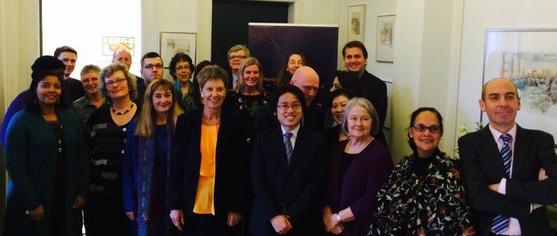
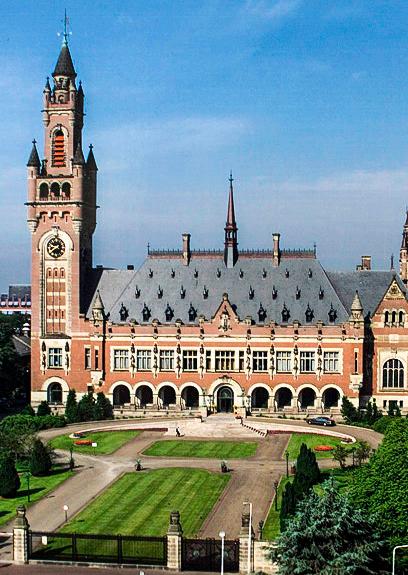
Beauty
by Life Member, Louis A Coutts
It was a spur of the moment decision. After months of living a solitary life and anchored each day in my apartment, I had this feeling that I was suffocating in this city environment. For a while I thought that it was my body aching for something different and to a certain extent that was true. But later, I was to discover that it was my heart more than my body which was aching for nourishment. Anyway, in a serendipitous moment I metaphorically stuck a pin in the map and came up with a place called “Dinner Plain” which seemed to be high up in the Victorian Alps. I had never heard of the place, but it just looked right for me. Within the hour I was in the car and five hours later, the last part of which was a tortuous winding mountain road that finally took me to sixteen hundred meters above sea level, I was high in the Alps. The sunset scenery was so enticing that I was reminded of the Greek mythological story of the Sirens who lured sailors to their death by their exquisite singing. So, I reluctantly resisted the temptation of the primeval scenery but could not ignore the trellises of denuded snow gums that lined the road.
In the morning I sat and watched the sun caress this eternal stretch of silent and uninhabited majesty and it was then that I realised how my heart had been so deprived these last lonely months. All that time in the prison of the city my heart was aching without me knowing and now, sitting alone as the sole spectator of nature’s silent but profound splendour, my heart realised how beauty had been missing from my life. I can’t even attempt to describe the seemingly endless stretch of virginal, steep dark valleys and ascending mountain walls, decorated with carpets of thinly veiled snow gums. Caught by the setting sun and unknown to human habitation, I felt as though I was drowning in a sea of silent tranquility and drenched with an overpowering shower of intoxicating beauty. I had forgotten how important beauty is to my life and more importantly, how the beauty of undisturbed nature nourishes my soul. My heart started to beat in unison with this symphony of silent nature and I ached for the sun not to set. But as the sun released its lengthening shadows across the high country, another symphony began to play. It was the silence of the profound darkness and I allowed it to seduce me. And then the dark heavens gradually revealed the eternity in which we live as trillions of stars in the Milky Way decorated the sky with a magical celestial necklace.
I realised that in the dark months that had captured us in a terrifying drama, I had forgotten how I had denied my heart the nourishment of beauty and that for my body to function my heart must be at peace with nature. Anyway, that is how the high country affected me, but it is not until the snow comes that it will have more spectators. I wonder if it will talk to them as it did to me in those serendipitous moments.

A Word of Appreciation
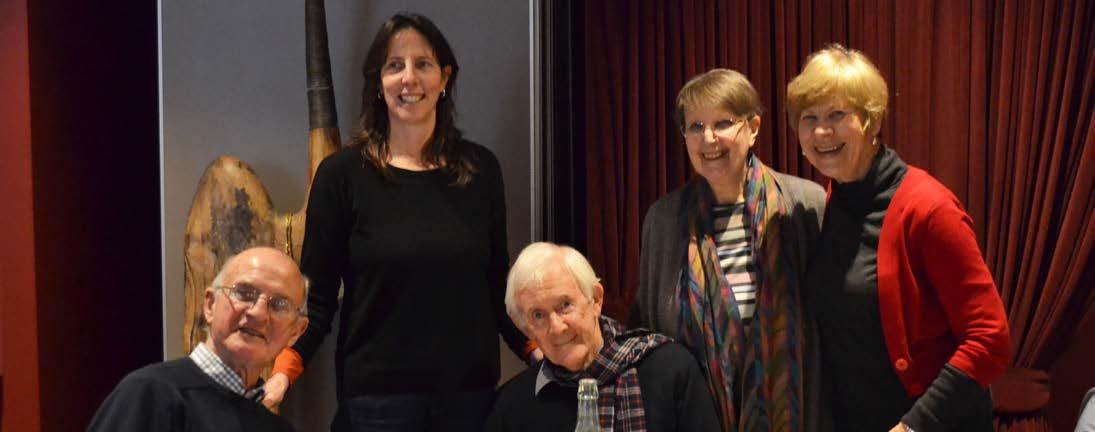
From left to right: John Price, Becky Nicoll, Mac Nicoll, Marg Nicoll and Judy Price. This photo was taken in August 2017 in the dining room of Graduate House.
by Life Member, Mac Nicoll
Without knowing much about The Graduate Union, I became a life member in 1958 and for the next 57 years received plenty of correspondence without taking much interest. However, sometime about 2015, my wife Margaret suggested we might try out the lunch room at Graduate House, having been there just once in all the years of our married life. We went… and we were so impressed that it set a pattern for the five years that followed. We were attracted not only by the high quality of the food but also by the warmth and care shown to us from all the staff, led by Dr Kerry Bennett, who were unfailingly welcoming and supportive. We began to invite friends to join us, usually beginning at our home so that we could use The Graduate Union car park and our friends were similarly impressed. Soon we were calling it, with good reason, “our home away from home”. Margaret had been living with ovarian cancer since 2001 and by 2019, after a courageous journey she was in the gentle palliative care of the Melbourne City Mission, and still living at home. We had come to feel very much part of the Graduate House dining room where the staff kept in touch with Marg’s progress. One day, just a month or so before Marg’s death, Kerry asked me on the phone if she might visit Marg with some of her colleagues. We agreed and within an hour or so I opened the door of our Princes Hill cottage to Shirley, Basma, Marwa and Kerry. I brought them into the living room where Marg was comfortable in her armchair and the others sat around her in a semi-circle and told her how they appreciated and loved her as they had got to know her at the Graduate House dining room. They then came forward, one by one, with a warm hug. Many tears flowed on that memorable day. I write this piece today as a formal way of expressing our gratitude to all the staff of The Graduate Union who have made the dining room there such a memorable, special place for our family.


